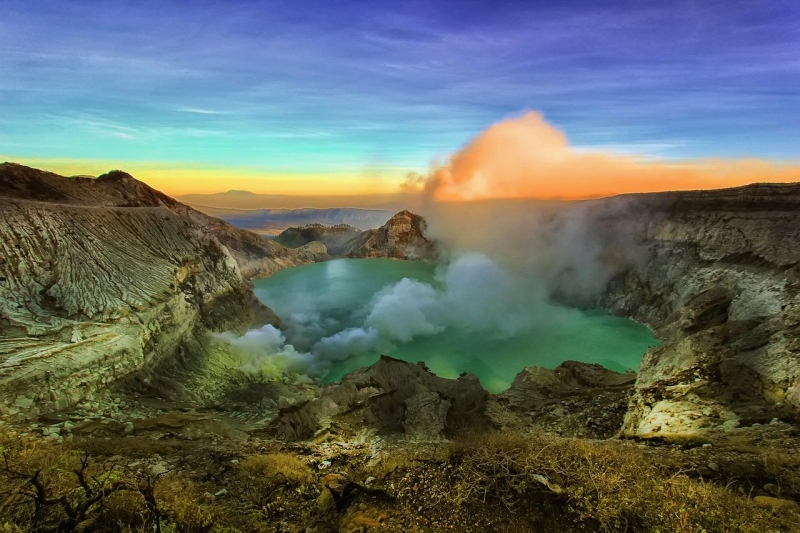5 Facts About The Famous Blue Flame of Ijen Crater in Indonesia

The "blue flame" phenomenon in the Ijen Crater, located on the island of Java in Indonesia, is a mesmerizing and rare natural occurrence. Thus visiting the Ijen Crater to witness the blue flame phenomenon can be a breathtaking experience. It feels surreal and otherworldly.
Most likely you have been watching The Ijen Crater Blue Flame on youtube. The blue flame phenomenon in the Ijen Crater is one of the most famous and well-documented examples of its kind. While you are traveling in Indonesia, it would be a significant loss not to spend some time visiting this natural wonder. Here are 5 facts about the famous Blue Flame of Ijen Crater in Indonesia you should know:
1. The Ijen Crater is an active volcanic complex, and it contains a highly acidic lake with high sulfur content. Volcanic activity beneath the surface releases sulfuric gases, primarily hydrogen sulfide (H2S).
2. As these sulfuric gases rise to the surface, they undergo sublimation, which means they transition from a gas to a solid without passing through a liquid phase. Upon reaching the relatively cooler air near the surface, the sulfur gases ignite spontaneously when they come into contact with oxygen.
3. Blue Flame Effect: The combustion of sulfuric gases produces a blue-colored flame, which can be seen in the dark or at night, creating a surreal and otherworldly scene. The blue color results from the specific conditions under which the combustion occurs, along with the presence of other compounds in the gas mixture.
4. Sulfur Mining: The Ijen Crater is also known for its traditional sulfur mining operations. Miners extract solid sulfur formed from the condensation of sulfuric gases. They use simple tools to break and carry the sulfur blocks, often enduring hazardous conditions due to the crater's toxic gases and extreme heat.
5. Every night, the sulfur miners hike up to the crater to take sulfur for 2 hours each trip. They have to endure the danger of extreme environments, toxic gasses, cold weather, and physical challenge to get a little income. The sulfurs will be used to produce cosmetics and soap.
Visiting the Ijen Crater to witness the blue flame phenomenon can be a breathtaking experience. However, it's important to note that the gases responsible for the blue flame, such as hydrogen sulfide, can be toxic in high concentrations. Visitors are advised to take safety precautions and wear protective masks to avoid inhaling these gases.
Dada Sabra S.
Log on theislandgirladventures for more interesting travelstories
image by Endriqstudio from Pixabay
---------------------------------------------------------------------------------------------------------------------------------------------------
Intrested in visiting this amazing sight ? Check out what Perama Tour Have to offer !
